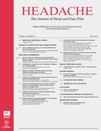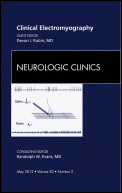
JOURNAL OF HEADACHE AND PAIN
Scope & Guideline
Exploring New Horizons in Pain Management
Introduction
Aims and Scopes
- Epidemiology and Burden of Headache Disorders:
Research that evaluates the prevalence, incidence, and socioeconomic impact of various headache types, including migraine, tension-type headaches, and cluster headaches. - Pathophysiology and Mechanisms of Headache:
Studies exploring the biological, neurological, and genetic underpinnings of headache disorders, including neuroinflammation, neurotransmitter pathways, and genetic susceptibility. - Clinical Management and Treatment Strategies:
Articles discussing pharmacological and non-pharmacological treatment approaches, including the use of monoclonal antibodies, neuromodulation techniques, and lifestyle interventions in headache management. - Psychosocial and Quality of Life Aspects:
Research investigating the psychological impact of headaches on patients, including comorbid conditions, mental health, and quality of life assessments. - Innovative Diagnostic and Therapeutic Approaches:
Papers focusing on advancements in diagnostic tools, imaging techniques, and emerging therapies for headache disorders. - Global Perspectives on Headache Care:
Research that addresses the disparities in headache care across different regions, including access to treatment and cultural factors influencing management.
Trending and Emerging
- CGRP Pathway and Monoclonal Antibodies:
There is a significant surge in research related to the calcitonin gene-related peptide (CGRP) pathway, with numerous studies assessing the efficacy and safety of CGRP monoclonal antibodies in migraine prevention and treatment. - Telemedicine and Digital Health Solutions:
The impact of telemedicine on headache management has gained traction, particularly following the COVID-19 pandemic, with research exploring the effectiveness of remote consultations and digital health interventions. - Neuroinflammation and its Role in Headaches:
Emerging studies are increasingly focusing on neuroinflammation as a critical factor in the pathophysiology of headaches, leading to a better understanding of chronic headache mechanisms. - Psychological Aspects and Comorbidities:
Research is trending towards understanding the interplay between psychological factors, such as anxiety and depression, and their impact on headache disorders, emphasizing the need for holistic management. - Personalized and Precision Medicine Approaches:
An increase in studies exploring personalized treatment strategies based on genetic, phenotypic, and psychosocial profiles of headache patients is becoming evident.
Declining or Waning
- Traditional Pharmacological Treatments:
There is a noticeable decrease in studies focused solely on traditional medications like triptans and analgesics, as newer therapies such as anti-CGRP monoclonal antibodies gain prominence in research. - Non-Evidence-Based Treatments:
Research on non-evidence-based or anecdotal treatments for headache disorders is less frequently published, reflecting a shift towards evidence-based medicine and clinical trials. - Unidimensional Studies:
There is a decline in studies that focus solely on one-dimensional aspects of headache without integrating psychosocial or multidimensional health outcomes. - Overreliance on Retrospective Studies:
A reduction in the number of retrospective studies as the field increasingly values prospective, randomized controlled trials and real-world evidence.
Similar Journals

HEADACHE
Leading the Charge in Headache ResearchHEADACHE is a premier academic journal dedicated to advancing the study of headache disorders through innovative research and clinical insights. Published by WILEY, this influential journal has been serving the neurology community since its inception in 1961 and is recognized as a leader in its field, boasting an impressive Q1 ranking in both Neurology and Neurology (clinical) categories for 2023. With a robust Scopus ranking of #48 in clinical neurology and #26 in neuroscience, HEADACHE consistently publishes high-quality research that contributes to the understanding and treatment of headache disorders worldwide. Although it does not offer open access options, the journal remains accessible to a wide audience through various institutional subscriptions. It aims to provide a platform for researchers, healthcare professionals, and students to exchange ideas and develop new strategies for headache management, making it an essential resource for those dedicated to improving patient outcomes in this challenging area of healthcare.

Annals of Clinical and Translational Neurology
Empowering Progress in Clinical NeuroscienceAnnals of Clinical and Translational Neurology is a premier journal published by WILEY, focusing on the fields of neurology and neuroscience. Since its inception in 2014, it has established itself as an Open Access platform, providing unrestricted access to cutting-edge research to promote scientific collaboration and innovation. With an impressive Impact Factor residing in the top quartile (Q1) for both clinical neurology and miscellaneous neuroscience in 2023, this journal ranks #52 out of 400 in the Neurology category and #22 out of 113 in General Neuroscience, indicating its significant contribution to the field. The journal welcomes submissions that address emerging trends and challenges in translational neurology, aiming to bridge the gap between laboratory research and clinical practice. By disseminating high-quality research and fostering a community of scholars, Annals of Clinical and Translational Neurology plays a vital role in advancing our understanding of neurological disorders and improving patient care worldwide.

Pulmonary Circulation
Elevating the discourse in pulmonary and respiratory medicine.Pulmonary Circulation is a leading open-access journal published by Wiley, focused on advancing the field of pulmonary and respiratory medicine. Established in 2011, the journal has garnered a prestigious reputation, achieving a Q2 ranking in 2023 among its category and ranking #70 out of 155 in Scopus within the specialty of Medicine – Pulmonary and Respiratory Medicine, reflecting its growing influence and relevance in the scientific community. With its commitment to delivering high-quality, peer-reviewed research, Pulmonary Circulation serves as a vital resource for researchers, clinicians, and students seeking to explore innovative ideas and findings in lung health, pulmonary vascular diseases, and therapeutic approaches. The journal has been open access since 2017, ensuring that groundbreaking research is accessible to a wider audience, thus promoting collaboration and knowledge exchange in this dynamic field. Located in the heart of the United States at 111 River St, Hoboken, NJ 07030-5774, the journal is dedicated to fostering advancements in pulmonary health and addressing real-world challenges facing patients globally.

Epilepsy & Behavior Reports
Bridging Research and Practice in Epilepsy CareEpilepsy & Behavior Reports, a distinguished journal published by ELSEVIER SCIENCE INC, specializes in the latest research and developments in the field of epilepsy and related behavioral conditions. Since its inception in 2019 as a fully Open Access journal, it has carved a niche for itself within the scientific community, providing an essential platform for researchers and clinicians focused on behavioral neuroscience and neurology. The journal's commitment to disseminating high-quality research is reflected in its current rankings within Scopus, placing it within the Q3 category for Behavioral Neuroscience and Clinical Neurology, underscoring its relevance to emerging trends in these fields. Located in the heart of New York, the journal strives to foster collaboration and innovation, making it a vital resource for academics, practitioners, and students eager to advance their understanding of epilepsy and its behavioral implications. The convergence of expertise and research in Epilepsy & Behavior Reports promises to illuminate crucial aspects of neurological health, driving forward the discourse that shapes future treatment and understanding of epilepsy.

Ideggyogyaszati Szemle-Clinical Neuroscience
Connecting Local Expertise with Global NeuroscienceIdeggyogyaszati Szemle-Clinical Neuroscience, an esteemed publication under the auspices of LITERATURA MEDICA, serves as a pivotal platform in the field of neurology and clinical neuroscience. Established in Hungary, this journal has been committed to advancing the understanding of neurological disorders and treatments since its inception. With its ISSN 0019-1442 and E-ISSN 2498-6208, it provides a unique local perspective alongside valuable contributions to the global discourse in neuroscience. Despite earning a Q4 quartile ranking in both Neurology and Clinical Neurology, the journal remains dedicated to publishing high-quality research that contributes to the scientific community's collective knowledge. Its coverage spans significant converged years from 1954 to 1985 and now continues through 2024, reflecting a rich historical foundation. Recognizing the importance of open access, the journal strives to enhance accessibility, albeit currently lacking a formal open-access model. Researchers, professionals, and students in the field will find in Ideggyogyaszati Szemle a resource vital for keeping abreast of emerging trends and findings in neurological science.

Journal of Pain Research
Transforming Understanding, Enhancing TreatmentJournal of Pain Research, published by DOVE MEDICAL PRESS LTD, stands at the forefront of the field of pain management and anesthesia, offering a critical platform for researchers and clinicians dedicated to advancing the understanding of pain and its treatment. With an Open Access model since 2008, this journal enhances accessibility to high-quality research, enabling a global audience to engage with innovative studies and findings. Recognized for its significant contributions, it has achieved a Q2 rank in Anesthesiology and Pain Medicine as of 2023, placing it among the top 30% in its category, and it holds a commendable Scopus rank of 41/136 in its field. Covering a broad scope encompassing clinical trials, pharmacology, and psychosocial aspects of pain, the journal invites submissions that advance both theoretical knowledge and practical applications, making it an invaluable resource for professionals, researchers, and students aiming to improve outcomes in pain management.

EUROPEAN NEUROLOGY
Elevating Understanding of Neurological DisordersEuropean Neurology, published by KARGER, is a distinguished journal in the field of neurology, catering to both clinical and neuroscience specialties. Since its inception in 1897 and continuing through 2024, the journal has been a vital platform for disseminating significant research findings and insights in neurology. With an ISSN of 0014-3022 and E-ISSN of 1421-9913, it ranks in the Q3 quartile in both clinical neurology and general neurology categories, reflecting its commitment to scholarly excellence while holding the 175th rank in clinical medicine and the 93rd in neuroscience, according to Scopus metrics. European Neurology facilitates a deeper understanding of neurological disorders and treatments, appealing to a diverse readership that includes researchers, clinicians, and students alike. Despite not currently offering open access, the journal’s rigorous peer-review process ensures that only high-quality research reaches its audience, making it an essential resource for those looking to stay informed in the rapidly evolving field of neurology.

Korean Journal of Pain
Fostering innovation in pain research and treatment.The Korean Journal of Pain is a distinguished open-access publication dedicated to advancing the field of pain management and anesthesia. Published by the Korean Pain Society, this journal has been a vital resource since 1988, contributing to significant advancements in clinical practice and research. With an impressive Q1 ranking in Anesthesiology and Pain Medicine, and a Scopus rank of #32 out of 136—placing it in the 76th percentile—this journal fosters high-quality scholarly communication among researchers and healthcare professionals. The journal's scope encompasses a wide range of topics related to pain, facilitating the exchange of knowledge crucial for both innovative research and effective clinical application. Located in Seoul, South Korea, it serves as an essential platform for publishing cutting-edge research, systematic reviews, and case reports, ensuring that the latest findings reach a global audience. Whether you are a researcher, clinician, or student, the Korean Journal of Pain is an indispensable resource for anyone dedicated to the study and treatment of pain.

NEUROLOGIC CLINICS
Advancing the frontiers of clinical neurology.NEUROLOGIC CLINICS, published by W B SAUNDERS CO-ELSEVIER INC, stands as a leading journal in the field of clinical neurology, boasting an impressive impact factor that reflects its significant contributions to neurological research and clinical practice. With an ISSN of 0733-8619 and E-ISSN of 1557-9875, this journal provides a critical platform for the dissemination of innovative research, case studies, and reviews focusing on various aspects of neurology, from diagnosis to treatment interventions. As part of its commitment to advancing the understanding of neurological disorders, NEUROLOGIC CLINICS is categorized in the Q2 quartile for Neurology (clinical) in 2023, indicating its robust standing within the academic community. It is recognized for its rigorous peer-review process and is indexed in Scopus, ranking #147 out of 400 in its field with a notable 63rd percentile. The journal, which dates back to 1983 and continues to publish vital findings up to 2024, is an invaluable resource for researchers, healthcare professionals, and students dedicated to enhancing their knowledge and clinical skills in neurology. Subscribe now to stay abreast of current advancements and expand your expertise in this dynamic field.

Journal of Hematology
Elevating Hematology Through Collaborative ResearchThe Journal of Hematology, published by ELMER PRESS INC, serves as a pivotal platform for disseminating cutting-edge research in the field of hematology. With an ISSN of 1927-1212 and an E-ISSN of 1927-1220, this journal is committed to advancing scientific knowledge and clinical practice through high-quality peer-reviewed articles encompassing all aspects of blood disorders, from basic science to health policy implications. While the journal currently operates under a traditional access model, it nonetheless prioritizes the rapid publication of significant findings, ensuring that researchers, clinicians, and students have timely access to the latest advancements in hematological research. Positioned to bridge gaps in knowledge and foster collaboration among scholars worldwide, the Journal of Hematology is an essential resource for anyone invested in this vital area of medicine.